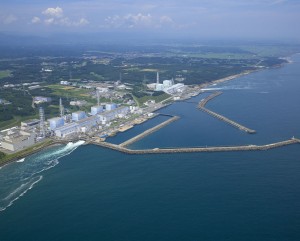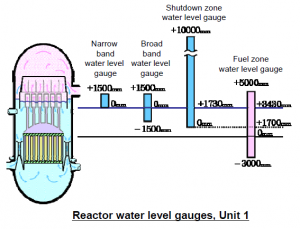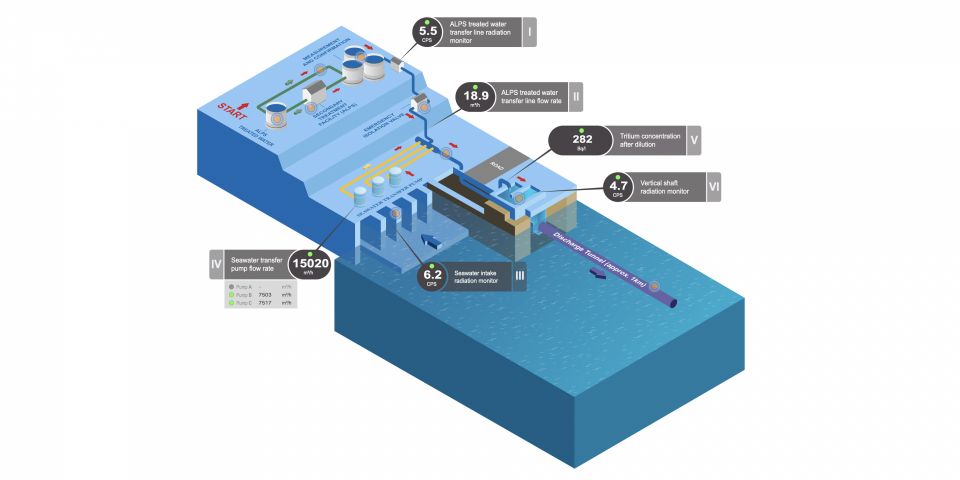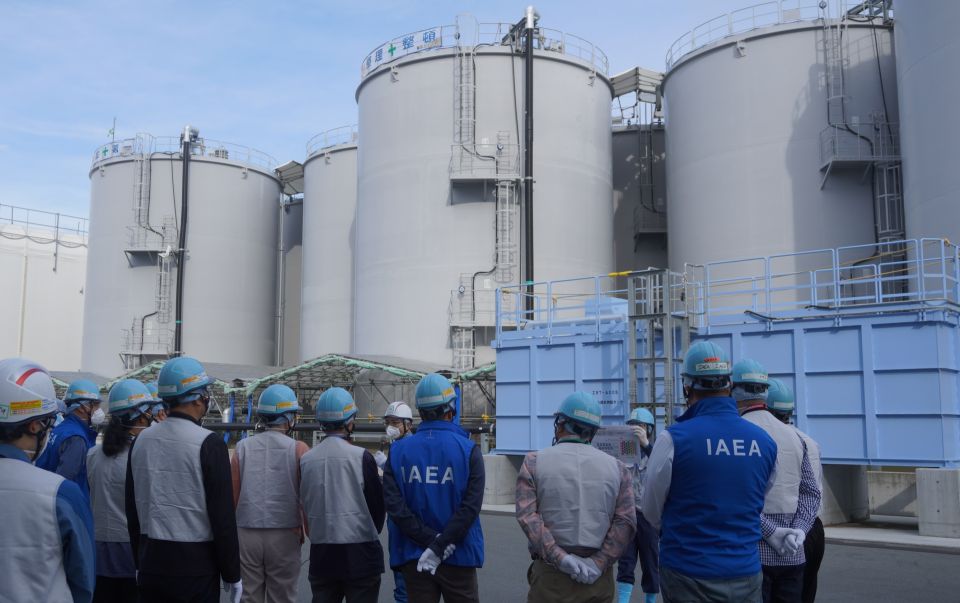ANS 2012 Winter Meeting - Fukushima Topical Sessions
The morning for us here in San Diego was filled with Opening Plenary Session events followed by an Attendee Luncheon in the Nuclear Technology Expo. (During the luncheon I had the good fortune to meet Dillon Inabinett and Kallie Metzger, both Graduate Research Assistants at the University of South Carolina's College of Engineering and Computing.)
The afternoon was filled, for me, with presentations on the Fukushima Daiichi nuclear accident. While it's not my purpose to reproduce this content in entirety, I will recount some of the highlights of the sessions.
Near and Long-Term Regulatory Changes
Two sessions were offered in the afternoon. The first session was titled: "Near and Long-Term Regulatory Changes after Fukushima: Does the Accident in Japan Call for a Major Overhaul of Nuclear Safety Regulations?" Presentations were made, followed by a panel discussion.
NRC Commissioner George Apostolakis pointed out that early on, the NRC felt that a similar sequence of events at any US site was unlikely, and that no imminent risk existed here of an accident duplicative of the (still evolving) Fukushima Daiichi event, so that continued operation of all nuclear plants was allowed. He then briefly described the familiar sequence of review events that took place with the Near Term Task Force, and the three tiers of post-Fukushima recommendations. As he did during the Opening Plenary, Commissioner Apostolakis pushed for the whole US nuclear industry and regulatory body to move toward a PRA-based system that can "manage the risks." His belief is that the present, mostly deterministic view of accident events needs to be replaced, or supplemented with, a probabilistic view, directing attendees to find and read NUREG-2150, "A Proposed Risk Management Regulatory Framework." Apostolakis believes that the NRC will move to add a "Design Enhancement Category" for modifications to cover BDBA (Beyond Design Basis Accident) events.
Giovanni Bruna, of IFSN (the French regulatory body's technical arm) pointed out that France has not one, but four groups of operating reactors; EDF operates commercial power reactors, while three other bodies operate test or experimental types. Bruna described the complications to regulatory action caused by many small differences in plants as-built, and further exacerbated by replacement or modified parts in following years. He noted that it's widely held that France has a totally standardized commercial fleet, but it isn't quite; it has 30 900-MWe PWR plants based originally off of the Westinghouse license, another 24 1300-MWe PWR plants developed from the original smaller plant design, and 4 of the N4 type PWR's. Bruna's points were many, but perhaps most striking to this author was the emphasis on the fact that many small modifications at a plant can add up to much more than a seemingly correlative effect in action and in accident progression, if their total operative effect, taken together, is not completely analyzed and understood. Since each plant is thus unique, he said that such a regulatory situation - trying to enforce any post-Fukushima changes on the whole fleet - is "Unbearable." Standardization, and maintenance of that standardization, is a key safety point.
Nils Diaz followed, asking "How safe is safe enough?" He noted that "every accident is preventable and correctable... viewed after the fact!" His most important point was that the nuclear industry seems to not fully understand the socio-political ramifications of nuclear accidents, although he did quote a US Court of Appeals decision that stated about nuclear plants, that "the level of adequate protection need not, and almost certainly will not, be the level of zero risk."
Lessons Learned
The second afternoon session was developed around lessons learned from not only Fukushima Daiichi, but Fukushima Daini and other plants.
Bal Raj Sehgal led off, and related his opinion that the well-known Reactor Safety Study, WASH-1400, ignored societal effects of evacuation and other ramifications now known to be highly significant to the public at large. Interestingly, he feels that the West, and Asia, essentially ignored lessons to be learned from Chernobyl because of the radically different plant design, operator training and operational oversight structures which existed in the USSR at that time.
Along with several other speakers, Sehgal stressed a need for instrumentation in plants that can accurately tell operators parameters like reactor vessel temperatures and pressure, reactor vessel water level, and containment pressure, so that decisions can be made in the case of a nuclear station black out. He also advocated filtered containment vents, as did the previous speaker.
Sehgal's most provocative statement, perhaps, was that we should toss out the old "Design Basis Accident" thinking - and that a core melt accident really SHOULD BE the design basis accident.
Akira Kawano of Tokyo Electric Power Company gave a presentation on the effects of the tsunami at Fukushima Daiichi and Fukushima Daini nuclear stations; he pointed out things operators wished they'd have had on site such as additional spare seawater pumps, multiple emergency power sources (both motorized AC and battery) and spare pressure cylinders for air and gas operated systems.
Dr. Salomon Levy shared his view that what really doomed the Fukushima Daiichi plant was three things working together: estimates for tsunami height were too low; belief that a true Station Blackout wasn't really possible, and inadequate accident response training. He then went on to give a tour-de-force technical lecture on SBO event BWR cooling methods and calculations (too detailed for inclusion here).
Finally, Sherrell R. Greene told us about many BWR accident studies performed by Oak Ridge National Laboratories over a long (1980-1995) period, which essentially predicted what actually transpired at Fukushima Daiichi, at least as far as events were driven by and timed with SBO and then loss of battery power at each unit. (Item: in the Opening sessions, EPRI related that its MAAP5 code seems to be able to duplicate the effects the reactors experienced at Fukushima Daiichi pretty well.) Greene says that we must go beyond what is expedient, and even beyond what the NRC requires, and apply new thinking. Like others, he again repeated a strongly felt need for accident analysis instrumentation to be backfitted to all plants.
Today's Fukushima sessions were fascinating and well worth-while; question and answer periods were filled with questions asked by participants from every corner of the globe. On the other hand, during the Dresden tour in concert with the ANS Annual Meeting in June, I was then in a group including Mark Pierson, Ph.D. of Virginia Tech; and he sat right next to me during all of the Fukushima sessions today. What a small world.
(Illustrations of Fukushima Daiichi nuclear station and BWR in-core water level measurement courtesy Tokyo Electric Power Company.)
Will Davis is a former US Navy Reactor Operator, qualified on S8G and S5W reactor plants. Davis performs Social Media services for ANS under contract, writes for ANS Nuclear Cafe as well as for Fuel Cycle Week, and also writes his own Atomic Power Review blog.






